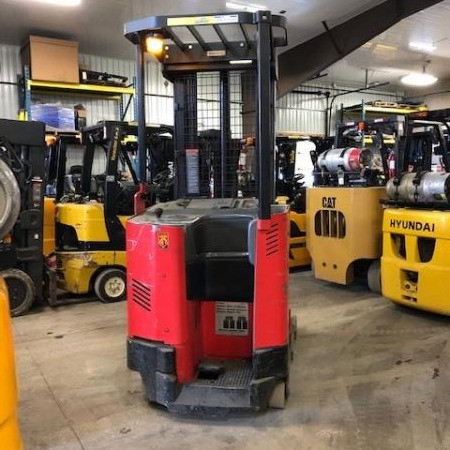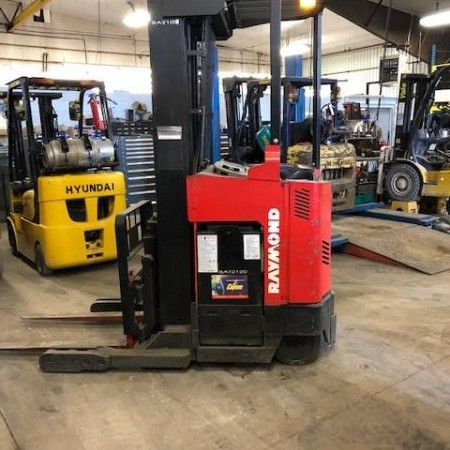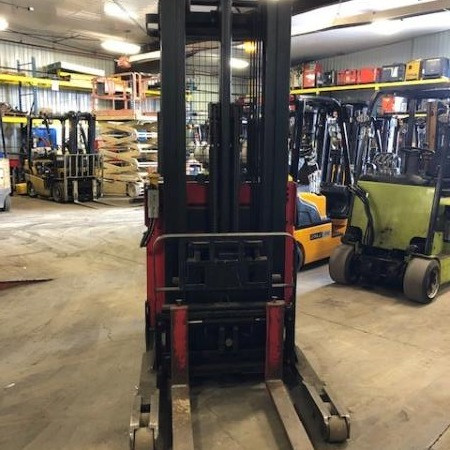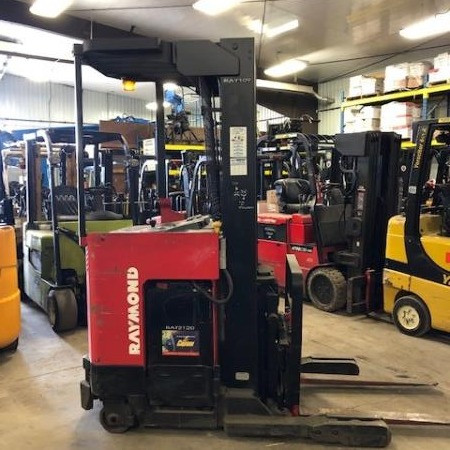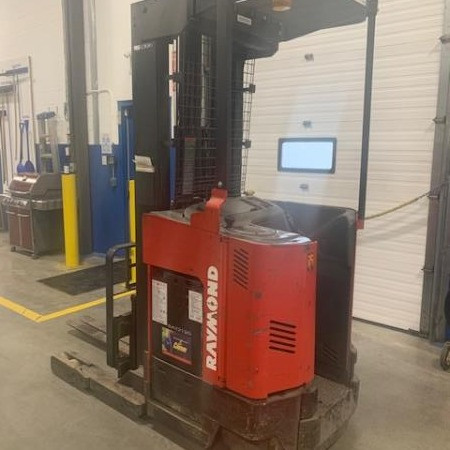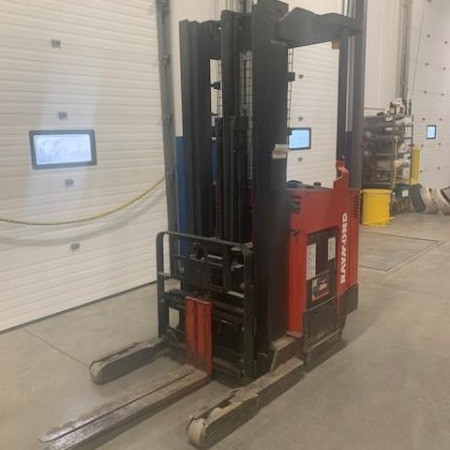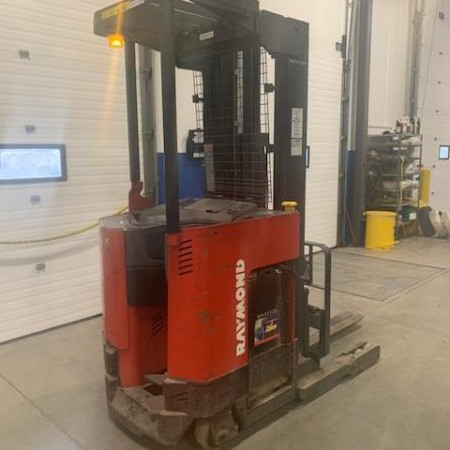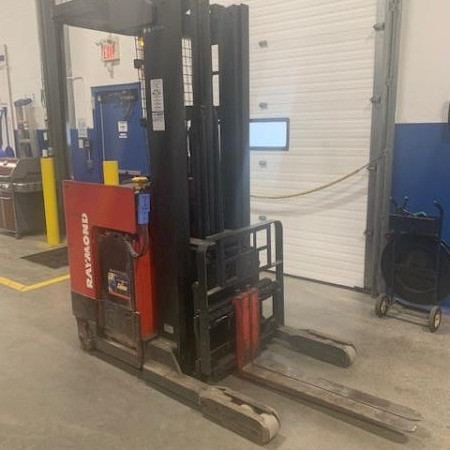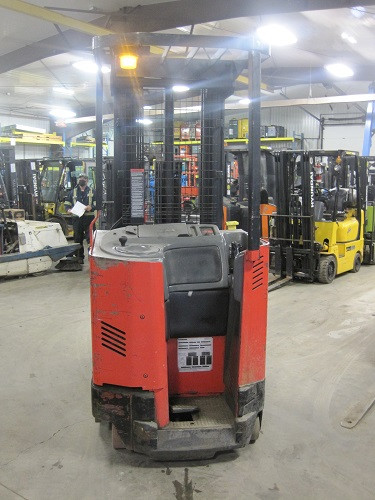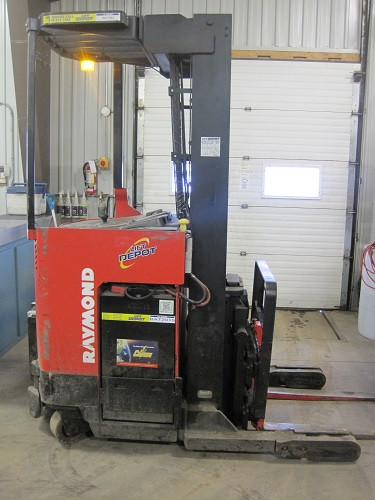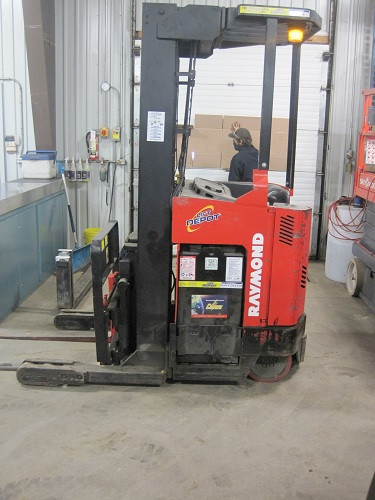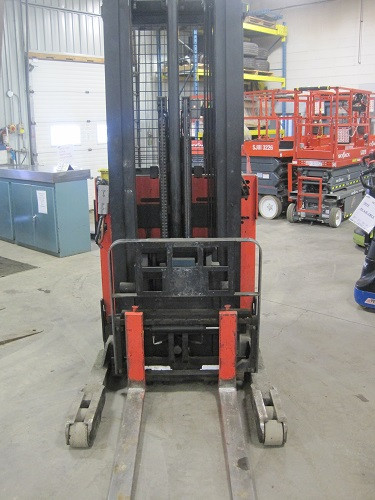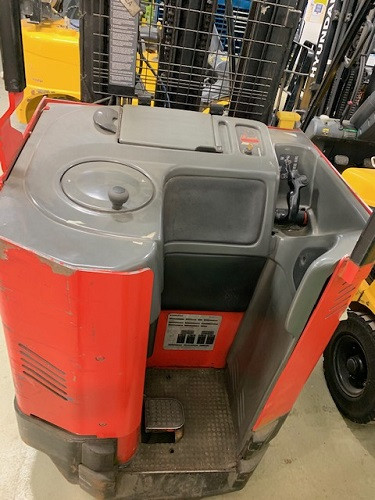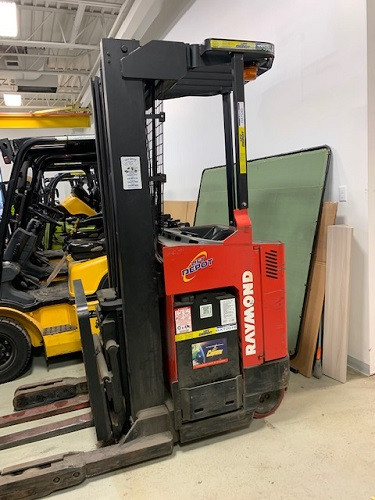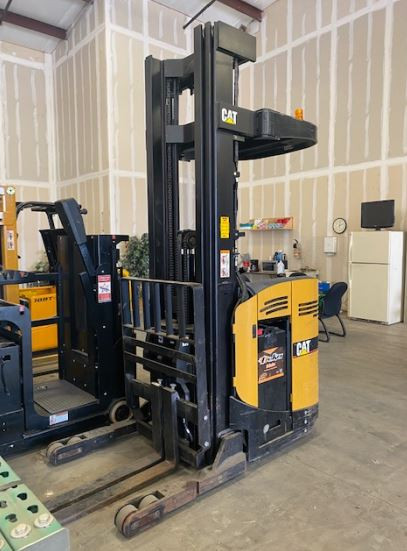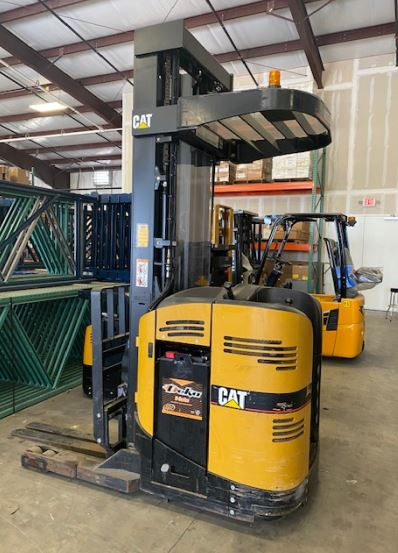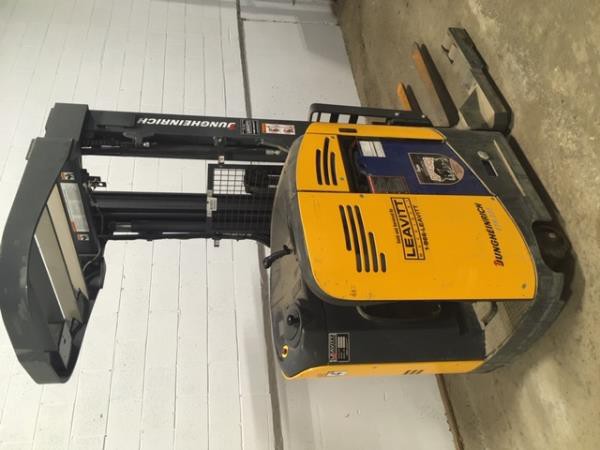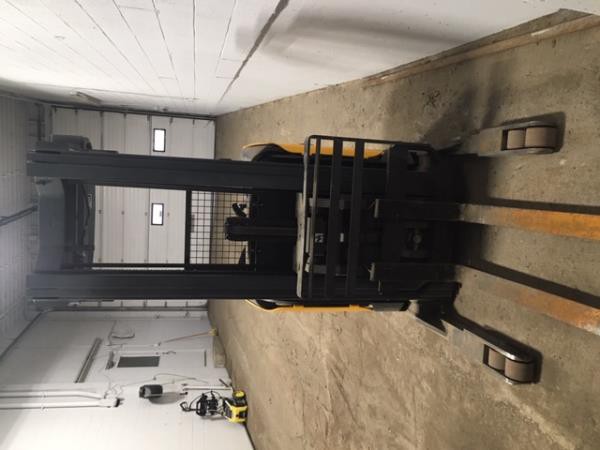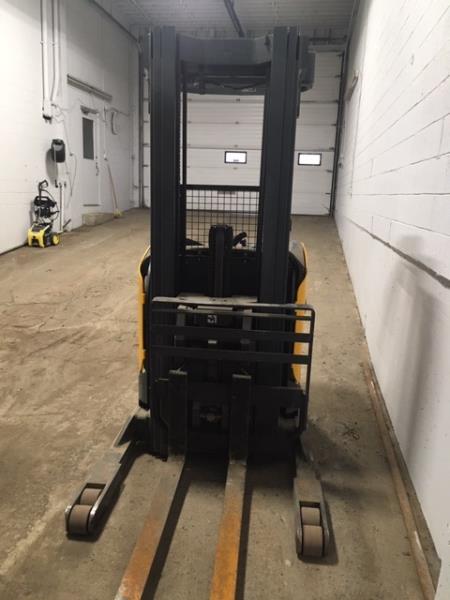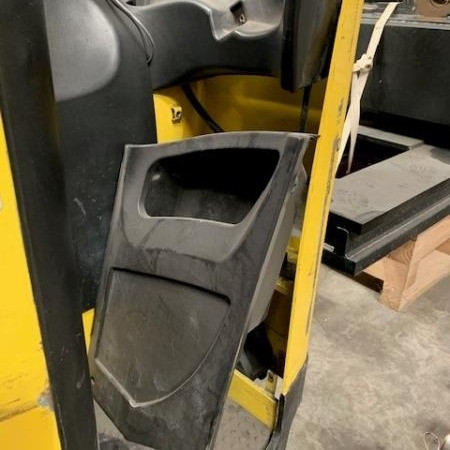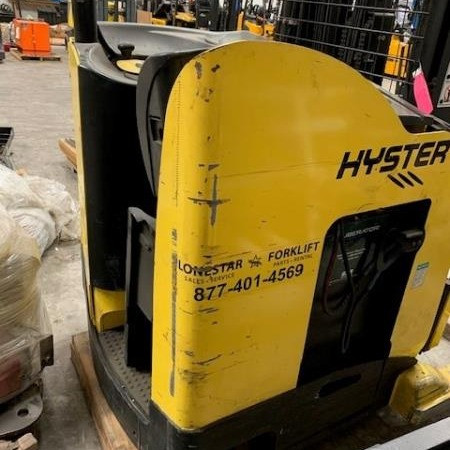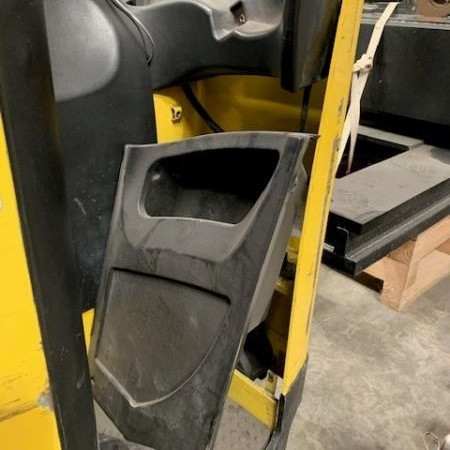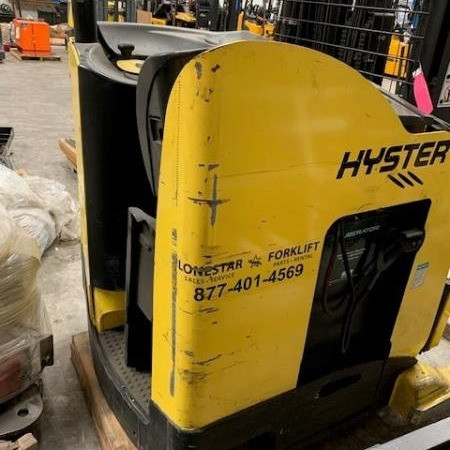Narrow Aisle Forklift Maryland
Used Narrow Aisle Forklift Maryland - Storage and shipping across the globe have been drastically updated since forklifts came onto the scene. First created at the beginning of the twentieth century, they are commonly seen and utilized through a variety of industries. Models are rated with precise maximum weights for loads to ensure safety. There are specified forward center of gravity recommendations also located on the manufacturer’s nameplate for operational safety. It is against the law to remove the nameplate in many jurisdictions without having permission from the forklift manufacturer. The nameplate is situated for easy reference and should always be visible.
Rear-wheel steering is essential for forklift operations to help increase maneuverability in tight corners. There is no caster action while steering the forklift; therefore, in order to maintain a constant state of turn, it is not necessary to apply steering force. Forklifts can become very unstable if their load is not adequately secured. The cargo and the forklift weights need to be combined with a center of gravity that is continuously adjusting. Never negotiate a high-speed turn with a raised load. This can result in a potentially deadly tip-over scenario due to the combination of gravitational and centrifugal forces. There are strict load limits within the forklift design that must be adhered to. The limit of the fork load decreases with elevation. There is a loading reference plate found on the machine. It is not advised to use a forklift to lift personnel without incorporating specific safety gear.
This equipment is commonly relied on in distribution centers and warehouses. Some locations feature Drive-In/Drive-Thru Racking where the forklift has to travel into a storage bay to retrieve or deposit a pallet. Guide rails are often on the floor to guide drivers inside of the bay. Pallets are situated on cantilevered arms or rails with the help of experienced operators. Every pallet has to enter the storage structure and the damage factor is higher in this type of facility in comparison to other storage versions. Locations rely on safe and efficient equipment when they use forklifts regularly. The width of the fork truck dimensions includes mast width and total machine width.
The hydraulics are a central component. Levers control the hydraulics and manipulate the actuators or hydraulic valves. There are numerous forklift designs and some are very comfortable and ergonomically designed. Numerous design features and load capacities are available for different jobs. The majority of forklifts in a regular warehouse setting offer load capacities ranging between 1-5 tons. There are giant units with fifty tons of lift capacity used for shipping containers.
Construction sites are common places to view forklifts. They are continuously employed to carry heavy items over rough terrain and for great distances. Fork trucks unite vehicle components with lifting capacity. Forklifts unload pallets of tools, bricks, construction items, steel beams and things from a delivery truck and taking them where they need to be deposited. Shipping companies commonly use truck-mounted forklift machines to handle offloading of materials.
Warehouse applications are popular for forklifts to load and unload goods. There are many ranges of models on the market from driver operated fork trucks to pedestrian operated options. Forklift operators rely on side-shifters to tilt the mast and move loads; offering precise fork lowering and raising to maintain a stable, balanced load.
Recycling operations rely on forklifts for emptying the recycling containers or trucks and taking their items to the sorting bays. These machines can load and unload tractor trailers, railway cars, elevators, straight trucks and more. Cage attachments are available for moving items that may slide off the forks such as tires.
Before loading or unloading, the work area needs to be prepared. To avoid overturning of the machine, fixed jacks are used to support the semi-trailer that is not coupled to a tractor. Pay attention to ensure that the vehicle entry door’s height clears the forklift height by a minimum of five centimeters. The docks need to be free from blockages and dry for ultimate safety. While traveling empty, the forks need to be pointed downward and when traveling with a load they are kept pointing up.
The Counterbalance forklift is the most popular kind. This model has forks at the front of the machine. It has been designed with a weight located in the back with the purpose to counter or offset the balance of the front load. This forklift is easy to maneuver and has no arm extension. Operators can ride up the racking or the load. These machines come in propane, diesel and electric situations.
A Reach forklift is popular for warehouse applications. This kind of forklift is commonly used for interior places. The Reach forklift can extend past the machine and use its’ stabilizing forks and legs to access the racking and delivering height that the majority of forklifts cannot reach. The legs support the machine and this design makes it unnecessary to rely on weight for counterbalancing the forklift. Double Reach forklifts are another popular option. The Double Reach models rely on extended forks that can reach twice as deep as regular forks and have the ability to grab dual pallets from the same racks.
A Walkie is an Electric Pallet Truck’s nickname. These units are designed to enable the operator to walk behind the truck. This motorized machine is capable of maneuvering into tiny spaces and can lift heavier pallets. It is able to move all pallets easily and efficiently. A hand throttle controls the lift and allows the operator to move them backward and forward. Additionally, this machine can stop quickly which is beneficial. There are numerous kinds of walkies, some even designed with a platform for the operator to safely stand on. Double Walkie trucks showcase extended forks to enable the operators the ability to maximize two pallets simultaneously.
Narrow Aisle Forklift PDF
Stock Number: DP-RAY109 GL
Make: RAYMOND
Model: EASI R40TT
Year: 2006
| Stock Number |
DP-RAY109 GL |
| Make |
RAYMOND |
| Model |
EASI R40TT |
| Year |
2006 |
| Category |
Narrow Aisle Forklift |
Stock Number: DP-RAY045 GL
Make: RAYMOND
Model: EASI R40TT
Year: 2005
| Stock Number |
DP-RAY045 GL |
| Make |
RAYMOND |
| Model |
EASI R40TT |
| Year |
2005 |
| Category |
Narrow Aisle Forklift |
Stock Number: LS13774 GL
Make: CAT
Model: NR3000
Year: 2006
| Stock Number |
LS13774 GL |
| Make |
CAT |
| Model |
NR3000 |
| Year |
2006 |
| Category |
Narrow Aisle Forklift |
Stock Number: 207131 GL
Make: Jungheinrich
Model: ETR 235
Year: 2013
| Stock Number |
207131 GL |
| Make |
Jungheinrich |
| Model |
ETR 235 |
| Year |
2013 |
| Category |
Narrow Aisle Forklift |
Stock Number: DP-CLK171 GL
Make: CLARK
Model: NPX20
Year: 2016
| Stock Number |
DP-CLK171 GL |
| Make |
CLARK |
| Model |
NPX20 |
| Year |
2016 |
| Category |
Narrow Aisle Forklift |
Stock Number: LS14767 GL
Make: RAYMOND
Model: 60-C40TT
Year: 94
| Stock Number |
LS14767 GL |
| Make |
RAYMOND |
| Model |
60-C40TT |
| Year |
94 |
| Category |
Narrow Aisle Forklift |
Stock Number: DP-CLK380 GL
Make: CLARK
Model: NPX20
Year: 2018
| Stock Number |
DP-CLK380 GL |
| Make |
CLARK |
| Model |
NPX20 |
| Year |
2018 |
| Category |
Narrow Aisle Forklift |
Stock Number: LS15309 GL
Make: YALE
Model: OS030ECN
| Stock Number |
LS15309 GL |
| Make |
YALE |
| Model |
OS030ECN |
| Category |
Narrow Aisle Forklift |
Stock Number: LS14253 GL
Make: HYSTER
Model: N40ZRS
Year: 2013
| Stock Number |
LS14253 GL |
| Make |
HYSTER |
| Model |
N40ZRS |
| Year |
2013 |
| Category |
Narrow Aisle Forklift |


